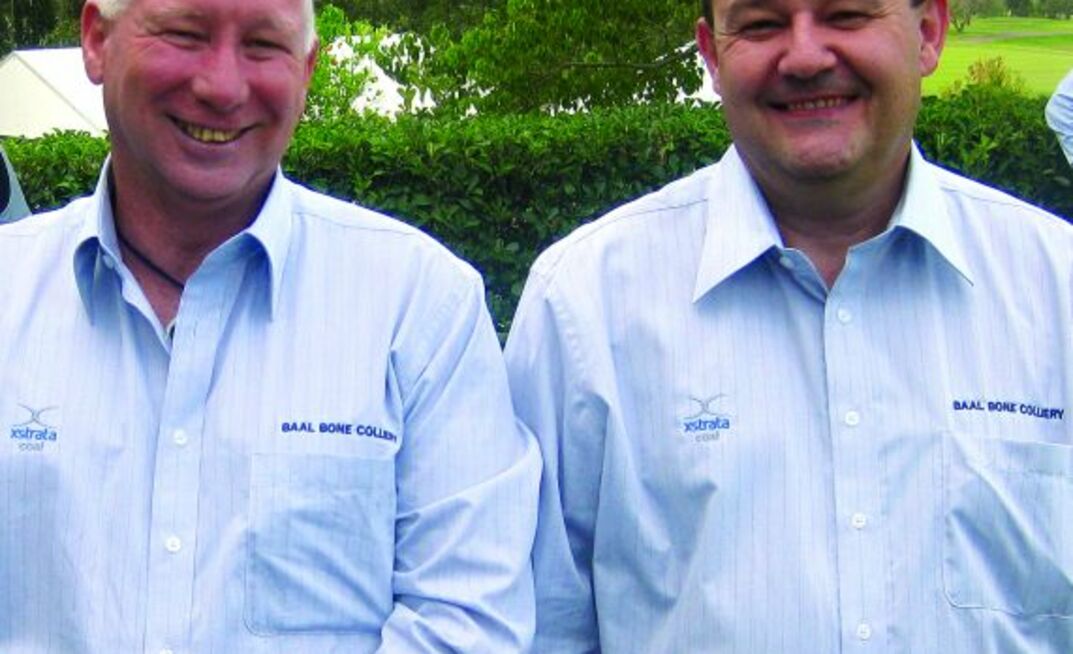Published in the June 2010 Australian Longwall Magazine
The readily transferable innovation provides a simple and easily understandable visible warning of a potentially fatal risk and was a finalist in the 2010 NSW Minerals Council Health and Safety Innovation Awards. Robert Langford and John Collett from Baal Bone presented the innovation to the awards meeting in Pokolbin.
The noisy environment and limited visibility in a mine means personnel who are not operating the single remote control unit are not always aware which mode a continuous miner is in, what control zones are appropriate, and if the machine is likely to move in a dangerous manner.
The implementation of new technology that detects the location of the people working around equipment is being developed but is not yet widely available or used in Australia. This equipment is costly and would not be retrofittable to all existing machines.
In 2005 a study was carried out by Burgess Limerick & Steiner which analysed the injuries reported to Coal Services from 2002 to 2005 that were associated with mining equipment. It found that 447 injuries were related to the operation of continuous miners.
Seventy-two injuries were related to being caught between moving parts of the machine or the machine and the environment.
In November 2008 the NSW Department of Primary Industries issued a safety bulletin called Mineworkers in Machinery Crush Zones. One of the incidents it covered involved a crush injury to a mine worker from a continuous miner.
After a discussion of the DPI safety alert at a daily management meeting at Baal Bone, a decision was made to investigate a means of easily determining which mode the continuous miner was operating in for the operators.
“What is the best way to identify no-go zones? Use a system we all already know: the traffic light,” Langford said.
“Most employees were familiar with the concept that red indicated danger, green indicated safety.”
A decision was made to fit visible coloured lamps to one of the mine’s Joy 12CM30 continuous miners to quickly and easily indicate to anyone within sight of the machine which operating mode it was in and which control zones were appropriate (either bolting or cutting mode).
A red lamp would indicate that the continuous miner was in mining mode and could start to move the cutter head, boom or tram. Green would indicate the miner was in bolting mode and could not start or move the cutter boom or tram.
Knowing which mode the miner was in would allow the operators to apply the correct control zones around the machine.
A design risk review was carried out. The main risk identified was compliance with the explosion protection requirements. The lamps would have no function other than to indicate the mode in which the continuous miner was operating.
Burn Bright, an experienced supplier of approved coal mine lighting systems, was contacted and provided power supplies, cables and lamps for fitting to the miner.
The workforce was informed how the mode lights worked and refresher training was carried out on go and no-go zones.
All areas of the workforce were involved in the design, operational risk assessment and modification of the system, Langford said.
“The feedback from other mines, inspectors and most importantly our own workforce has been 100 per cent positive,” he said.
“It is difficult to quantify the benefit of the innovation. The site had no record of injuries caused by individuals being in the wrong control zones. It had been noted on several occasions that persons had been working in no-go zones.
“The Mode Indication Lights are considered a success and a positive safety improvement by the workforce.”

























